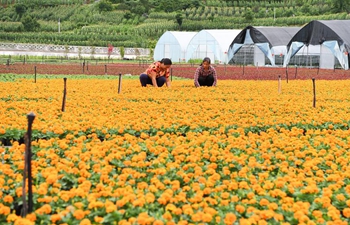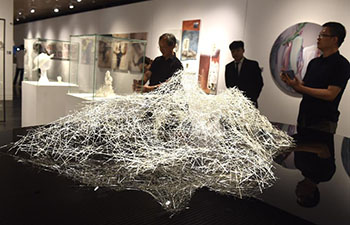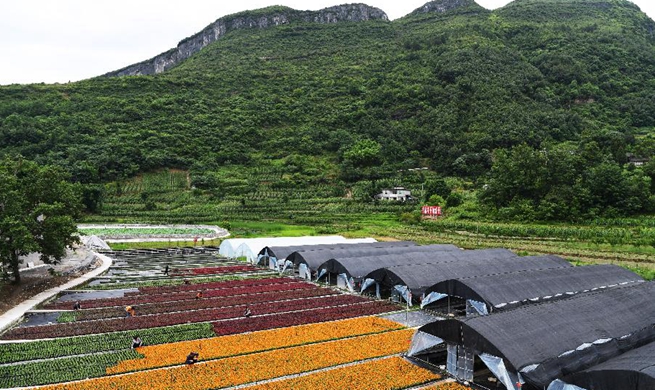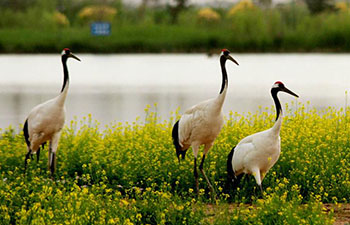XINING, June 13 (Xinhua) -- Perched atop a 50-meter-tall electrical tower, two birds fly out of an artificial nest into the open air.
"There are bird eggs in the nest!" shouts Wang Hui, as he checks the tower's power lines.
Wang, who works with the State Grid branch in Qinghai Province in northwest China, has been assigned to check the operating conditions of the power grid connecting Xining, capital of Qinghai Province, and Lhasa, capital of Tibet Autonomous Region. The project, which officially went into operation in 2012, spans 2,530 km and stands at an average altitude of 4,500 meters above sea level.
While the project has guaranteed electricity for local residents, those who conduct safety-checks on the towers have been troubled by one thing: birds.
"The project crosses the Hoh Xil nature reserve, where a lack of tall plants have forced birds to make nests on the electrical towers," Wang said. "Many birds have been killed or injured due to the high voltage, and the circuit frequently breaks because the birds rest on the lines."
"In the beginning, the workers placed sharp objects and mirrors on the towers, but this created more problems," Wang said. "Some birds were injured or even killed by the sharp objects."
To prevent the birds dying, authorities with the State Grid branch came up with an innovative solution: to build artificial nests in the safe areas of the towers.
"We started putting the artificial nests on the towers in 2015," Wang said.
So far, 86 nests have been placed and 50 more will be installed this year.
"We found that all our nests have attracted birds," Wang said. "Some have even hatched their eggs there."
"We had two choices, either we install safer repellent objects and insulate the circuits better so the birds don't get hurt," he said. "Or we just put our own nests up."
The nests measure 80 cm in diameter and are made out of rattan, a flexible type of palm tree. Workers like Wang Hui carry these nests on their backs and climb up the towers, placing the nests on the tower's platforms while suspended in mid-air.
"We usually put a little mattress made of coir, the fibrous material found on coconuts, in each nest," Wang said.
It is very cold at such a high altitude and workers have to cut off chunks of ice on the tower frames while climbing. The entire process can take half an hour.
"By using artificial nests, we not only lowered the possibility of birds getting hurt, but the lines now have a more stable power transmission," Wang said.
According to the State grid, since the measures were taken, the number of power outages has been reduced twice a year on average. Since August 2017, there has been no reports of power outages because of birds. An extra 2.65 million kilowatts-hours of electricity is transmitted on average every day.
"We will continue to improve how we protect the birds, so that humans and birds can co-exist in harmony," said Yuan Zhiyi, with the State Grid branch in Qinghai.

















